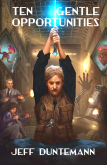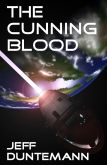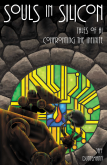- Although I created a Twitter account back in November, I haven’t done much with it until a day or so ago. I’ve begun posting what amount to instant Odd Lots on Twitter, so if you were waiting for me to do something useful before following me, well, the wait is over.
- Twitter has been using its own link shortener t.co to shorten all links in tweets since 2011 or so. It’s automatic and requires zero additional keystroking. Why, then, do tweeters still use services like bit.ly and goo.gl?
- The FCC may change the definition of “broadband” today, which could demote tens of millions of people (mostly DSL users) to some weird limbo between dialup and broadband. Most of the DSL connections I’ve used have been hideous, some providing measured speeds right down there with 1994 dialup, along with weird lockups and general bit-mayhem.
- Update to the above: Yup. It happened. Next on the agenda: net neutrality.
- NASA’s New Horizons probe is now waking up. We’re about to get our first close-in views of the last (known) un-visited planet in the solar system. Pluto and its gigantic moon Charon are only 12,000 mles apart and orbit one another in 6.3 days, so I’m expecting that some of the upcoming images will be startling, to put it mildly.
- Your coding style gives you away. Mine certainly does–all my reserved words are in uppercase. Why run with the pack?
- Wired tests five wine-stain removers. $18 a bottle? I dunno. At $3.50 or so, Spray & Wash Resolve Stain Stick always works pretty well for us. (Me, actually. Carol drinks white wine.)
- Apple’s app store billed more than Hollywood’s entire box-office take last year.
- It’s easy to say “We’re going to tie health-care payments to health-care outcomes. It’s a lot harder to measure those outcomes objectively.
- This thingmajigger–called a “Panjandrum”–is almost certainly the silliest weapon in 20th century military history. I invite you to nominate competitors, but I warn you, it’s a tough act to beat. (Make sure you scroll down to the video, even if you don’t read the whole thing.)
- Finally, from the Global Vaporizing department: 2,960 degrees in Cave Creek. Boy, it didn’t get quite that hot back in the 90s… (Thanks to Bill Roper for the link.)
history
Odd Lots
Daywander

“Hey, Contra Boy! Are you dead or something?”
Me? No. C’mon, if I were dead I would have mentioned it. So I’m not dead, though I am something, and while I can tell you it isn’t ill-health (for either of us) I can’t say much more about the something beyond that.
It’s certainly gotten in the way of other pursuits.
Anyway. For the first time I am hands-up-to-the-elbows in Windows 8. Carol wanted a new ultrabook-class laptop for Christmas, and we shopped together. She chose the 11.5″ version of the Lenovo Yoga 2, which (like my Transformer Prime) attempts to be both a loptop and a tablet. Unlike my Transformer Prime, I think it actually succeeds. The pivoting display (see above) lets it work as a tablet, and while I’m still not used to grabbing keys on its virtual backside while gripping the little slab in tablet mode, the machine ignores the keypresses. If the keys themselves are robust, no harm will come of it. The 1366 X 768 display isn’t retina-class, but it’s gorgeous and good enough. It’s got a 1.5 GHz Core i3 and 500 GB hard drive, which is more than sufficient for how we intend to use it.
Like all retail machines, the Yoga 2 is loaded with crapware, some of which I’ve never heard of and haven’t looked up yet, like the Maxthon Cloud Browser. Some of the crapware is crapware by virtue of being preinstalled; Evernote is a worthy item but I do not want it on the machines I buy. Ditto Zinio. Doubtless a lot of the other dozens of thingies cluttering up the display are there for Lenovo’s benefit and not ours; remember that crapware slots on consumer machines generate lots of money for their vendors through sales conversions, and Lenovo gets a cut.
My biggest problem is that I will eventually have to replace the MacAfee crapware with something that works. We standardize on Avast at our house, but getting rid of security suite crapware is notoriously difficult. Most people eventually just give up and pay for it. Not me.
I’m spending considerable time on the project not only because Carol needs a machine that works well, but also because I need a new laptop myself. A 13″ Yoga might do the job, assuming I can learn to love Windows 8, or at least hold hands with it. A big tablet would be useful for reading PDF-format technical ebooks. Now, having been set up the way Carol likes, it goes back in its box, the box gets wrapped, and it joins the pile under the Christmas tree. Much better that way than trying to figure out what’s crapware and what isn’t on Christmas morning.
Quick summary of what I’ve been reading:
- The Call of Distant Mammoths, by Peter T Ward (Copernicus Books, 1997.) Why did the ice age mammals vanish? It wasn’t simply human predation or climate change. It was a combination of things, especially human predation and climate change. (Wow! The brilliance!) Cost me a buck plus shipping, and the gruel was thick enough so that I won’t claim the time spent on it was totally wasted. Still, not recommended.
- Neanderthal Man, by Svante Paabo (Basic Books, 2014.) It seems like carping, but the book is mis-titled. It’s not about the Neanderthals themselves but rather the sequencing of their genome, which the author spearheaded. Paabo’s writing style is solid and amiable, and he does a good job explaining how DNA can be found in very old bones (with tremendous difficulty and peculiar luck) and how it was teased out over a period of almost twenty years. I must emphasize that if you have no grounding at all in gene sequencing, it will be a bit of a slog. However, if you pay attention, you will learn a lot. Highly recommended.
- 1848: The Year of Revolution, by Mike Rapport (Basic Books, 2008.) My Duntemann ancestors arrived in the US in 1849 or 1850. We haven’t found the crossing records yet, but we have a strong hunch why they left: the European upheavals of 1848. Like WWI, 1848 doesn’t summarize well. The people rose up against their elites, who were in many cases so afraid they were facing Jacobin 2.0 that kings resigned, constitutions were given, and (alas) the roots of commoner suffering remained misunderstood and mostly uncorrected. Again, this may be a slog even if you have some grounding in European history. History doesn’t always make sense. Sometimes you just have to describe the squirming details of what will always remain chaos. Cautiously recommended.
The odd lots are piling up too. Will try to get some posted tomorrow.
Odd Lots
- This overlong, (10,000 word) wandering, muddled, and occasionally brilliant essay is a must-read if you feel (like I do) that tribalism and tribal hatred are the greatest threat facing humanity today. We’re precisely one month away from the midterms, and my phone is ringing a dozen times a day with haters demanding that I hate whole groups of people who have little in common with one another beyond their being hated by the callers. Here’s a clue, folks: Politics does not give you permission to hate. If you hate, you’re a hater…and those of us who don’t hate know who the haters are.
- Jim Strickland sends a link to new research on creating organic solar cells based on short vertical nanopillars that look like well-trimmed blades of grass, or a short-pile shag carpet.
- Here’s as clear a statement as I’ve ever seen why not to play with bitcoin, quite apart from the fact that law enforcement probably considers posession of bitcoins ample evidence of criminal activity. No thanks.
- There was 53K of RAM on our planet in 1953. And damned if the computers didn’t want 64.
- A case that was a long time brewing may establish additional precedent that DRM is an antitrust violation. Actually, what DRM really does is turn honest customers into pirates.
- Michigan vineyards are having their worst grape harvest ever this year, thanks to last winter’s record-breaking cold. That’s a shame; Michigan makes some damned fine wines, especially sweet wines, which we drink when we’re in Chicago. (I don’t see them here in Colorado.)
- Wines, yes: Back in 1973 I had my first can of wine. The other night I had my second. My first thought: The Seventies are returning, egad. My second thought: Hey, that’s not bad wine!
- The real reason there will be no Windows 9: Some lazy code jockeys will mistake “Windows 95” and “Windows 98” for “Windows 9.” This makes sense to me, and if it reduces the universe’s bug supply even a little, it’s a very, very small price to pay.
- Wow. There are no longer any cartoons on Saturday Morning broadcast TV. Which doesn’t mean that the universe is not awash in cartoons, most of them simply hideous.
- Before reading this article, I had never heard of Axe Deodorant. Now, all else being equal, I’d rather smell like nothing. But do I read here that there’s an SKU with the scent of…solder? How about Bakelite terminal strips plus capacitor wax?
- Pertinent to the above: The last aftershave I think I ever used regularly was called Nuts & Bolts in, I believe, 1971.
Daywander
This entry will be a hodgepodge, or as they say in some circles, a “hotch potch.” (I think it’s a Britishism; Colin Wilson used that spelling many times.) Stuff has been piling up in the Contra file. Carol and I have been slighting housework for these past six months, she laid up after surgery on both feet, and me writing what has doubtless been the most difficult half-a-book I’ve ever written. We’ve been cleaning up, putting away, and generally getting back to real life. Real life never tasted so delicious.
One reason is rum horchata. I’m not one for hard liquor, mostly, and generally drink wine. (Beer tastes far too bitter to me.) But Rumchata got me in a second. It’s a dessert cordial no stronger than wine, with the result that you can actually taste the other ingredients, like vanilla, cream, and cinnamon. Highly recommended.
People ask me periodically what I’ve been reading. After soaking my behind in computer science for the past six or eight months, I’ve been studiously avoiding technology books. That said, I do endorse Degunking Windows 7 by my former co-author Joli Ballew. I actually used it to learn some of the Win7 details that weren’t obvious from beating my head on the OS. I wish it were a Coriolis book, but alas, it’s not. That doesn’t mean it’s not terrific.
True to my random inborn curiosity about everything except sports and opera, I’ve developed an interest in the chalk figures of southern England. The next time we get over there (soon, I hope, though probably not until summer 2015) we’re going to catch the Long Man of Wilmington, the White Horse of Uffington, and that very well hung (40 feet!) Cerne Giant. Other chalk figures exist, many of them horses. Some can be seen from Google Earth. A reasonable and cheap intro is Lost Gods of Albion by Paul Newman. The book’s been remaindered, and you can get a new hardcover for $3. I wouldn’t pay full price for it, but it was worth the hour and change it took to read. My primary complaint? It needs more pictures of chalk figures, duhh.
Quick aside: While researching kite aerial photography with my found-in-the-bushes GoPro Hero2 sports camera, I came upon an impressive video of the White Horse of Westbury taken from a double bow kite (rokkaku). I have the cam, and loads of kites. All I need now is a chalk figure. (I suspect I could coerce my nieces into drawing one for me.)
Far more interesting than Lost Gods of Albion was Gogmagog by Thomas Lethbridge. I lucked into a copy of the 1957 hardcover fairly cheap, but availability is spotty and you may have to do some sniffing around. If you’re willing to believe him, Lethbridge did an interesting thing back in the 1950s: He took a 19th century report that a chalk giant existed on a hillside in Wandlebury (near Cambridge) and went looking for it. His technique was dogged but straightforward: For months on end, he wandered around the hillside with a half-inch metal bar ground to a point, shoving it into the ground and recording how far it went in before it struck hard chalk. His reasoning was that the outlines of a chalk figure would be dug into the chalk, and thus farther down than undisturbed chalk. In time he had literally tens of thousands of data points, and used them to assemble a startling image of two gods, a goddess, a chariot, and a peculiar horse of the same sort as the Uffington White Horse.
Not everybody was convinced. Even though Lethbridge was a trained archaeologist, his critics claimed that he was a victim of pareidolia, and simply seeing the patterns he wanted to see in his thousands of hillside holes. The real problem was that Lethbridge was a pendulum dowser, and a vocal one: He published several books on the subject, which make a lot of claims that aren’t easily corroborated. Lethbridge claims that most people can dowse, and hey, it’s an experiment that I could make, if I decided it was worth the time. (It probably isn’t.)
The third book in my recent readings is The Physical Phenomena of Mysticism by Herbert Thurston, a Jesuit priest who spent a good part of his life collecting reports of peculiarly Catholic weirdnesses (stigmata, levitation, inedia, odor of sanctity, etc.) and presenting them in a manner similar to that of Charles Fort, if better written. Most of the articles were originally published in obscure theology journals, but were collected in 1952 in a volume that I’ve never seen for less than $100. Last year it was finally reprinted by White Crow Books and can be had for $18. I’m not sure what one can say about reports of people who have not eaten for forty years. Mysticism is a weird business, but physics is physics. The book is entertaining, and it’s given me some ideas for stories, particularly since I have a spiritually butt-kicking psychic little old Polish lady as a major chartacter in Old Catholics. (Vampires are just so 2007.)
If three books doesn’t seem like much, consider my habit of going back to books I’ve read and liked, and flipping through them to see what notations I’ve made in the margins. We all make them; when was the last time you deliberately went back to read and reconsider them? I’ve been dipping into Gary Taubes’ Good Calories, Bad Calories, Steven Pinker’s The Better Angels of Our Nature, Colin Wilson’s A Criminal History of Mankind, and Matt Ridley’s The Rational Optimist, and arguing with my own marginal notes. One can learn things arguing with oneself, and I’ve been known to change my mind based on things I scribbled in other people’s book’s ten or twelve years ago. (Before that I was too young to have anything like informed opinions.)
For example, I’ve gone back to calling it “global warming.” Climate is always changing, and the assumption that we know all the forces propelling those changes is just wrong–and in tribalist hands, willfully dishonest. Carbon dioxide has exactly one climate trick in its bag: It warms the atmosphere. That’s it. If the discussion is about carbon dioxide, it’s about global warming. Why climate changes is still so poorly understood (and so polluted by political hatred) that we may be decades before we even know what the major forcings are. In the meantime, I want predictions. If your model gives you climate data out fifty years, it will give you data out five. Publish those predictions. And if they prove wrong, be one of those people who really do #*%^*ing love science and admit it. Being wrong is how science works. Being political is how science dies.
I have a long-delayed electronics project back on the bench: Lee Hart’s CDP1802 Membership Card. I started it last summer, and set it aside when the Raspberry Pi gig turned up. It’s basically a COSMAC Elf in an Altoids tin. I had an Elf almost forty years ago. I programmed it in binary because that’s all there was in 1976. And y’know? I can still do it: F8 FF A2. F8 47 A5…
Some things really are eternal.
Odd Lots
- $10,000. Software written in Pascal. Windowing interface remarkably like the Xerox Star’s, on which I’d been trained the year before. I spent a wistful hour putting it through its paces at a nearby computer store in Rochester, NY. I’d just spent $4000 on a CP/M system three years earlier, and didn’t have another $10K lying around. Nice retrospective on poor Lisa, who never got the respect she deserved. Market niches matter, and it’s not always possible to create your own from the quantum vacuum.
- Solar Cycle 24 is definitely double-humped, and its second peak could well be peakier than the first. This doesn’t make it a strong cycle, by any means, but we thought the whole deal was over after the first peak in 2011. Not so.
- An amateur telescope maker in Utah bought a 70″ spy satellite mirror at a scratch-and-dent auction and built the world’s largest amateur telescope.
- I haven’t written aliens into my SF much, at least since I first thought deeply about the subject in college. This is part of the reason. I had planned out a story in which Earth contacts an alien race with so old and rich a culture that their language consists of context-sensitive metaphors within similes within puns within knock-knock jokes. I never wrote the story because I could never figure out how to crack the problem.
- Your graphics card is getting faster, but there’s no guarantee that you’ll even notice. I think this is what the term “diminishing returns” was coined to describe.
- From the Major WTF File: One of my readers sent me this link, and I’m still trying to figure out what these creeps are up to. I’ll post a separate entry on it when I have a little more time to research it. But look yourself up: I’d like to hear about it if you’re on there too.
- Little by little, people are starting to figure it out: Fat will make you lose weight and keep you healthy. Sugar will f*(&ing kill you.
- I was told by a cardiologist 20-odd years ago that gum disease was related to heart disease. It seemed like a stretch at the time, but since then I’ve seen a number of studies indicating that it’s true. Floss, don’t infarct!
- Slate has a short piece explaining what makes a continental breakfast continental. What made me laugh was an embedded Key & Peele bit in which Peele delights in discovering Fruit Loops at his hotel breakfast counter, as though they were rare treats. Bartholomew Stypek does the same thing in Ten Gentle Opportunities: “Carolyn had gifted him with sacks of delicacies that any nobleman in the realm of Ttryngg would kill for: Doritos, Cheetos, Pringles, Ruffles, and sweets baked by elves.”
- The Marines are about to begin hunting Somali pirates. If I were a Somali pirate, I would be thinking about early retirement.
- Cities, like ogres and onions, have layers. The deepest and oldest of those layers can be forgotten by all but a few. Here’s a marvelous quick tour of the some of New York’s less visible layers. No ogres. We hope. (Thanks to Esther Schindler for the link.)
Daywander
Feeling better. Some. Not lots.
Of course, “better” (as with other words like “warmer”) are inherently comparative and need reference points, or they’re meaningless. Better/warmer since when? Better since last week? Hell yes. Better since two weeks ago? Maybe a little. (It’s hazy; like the Ball says, “Ask again later.”) Better since three weeks ago? No way. I’ll be back with the docs again tomorrow. We’ll see what they say.
This is the first time I’ve done bedrest with a tablet. Read stuff, played Random Factor Mah Jong, checked in on email and Facebook. I have the Transformer Prime’s matching keyboard dock, which made many things easier. That said, most of Facebook, being as it is a mighty global confluence of Loud And Aggressive Persons, is a vexation to the spirit. By a week or so ago my body had had all the vexation it was willing to put up with, so to avoid its actually becoming a spirit, I pondered pleasanter things, like tweezing my armpits.
I did read one reasonably good book: Wicked River: The Mississippi When It Last Ran Wild, by Lee Sandlin. Great light reading, and full of interesting things. We’ve been a little too thoroughly romanced by Mark Twain and others: The Mississippi in the 1850s was just freaking nuts. The book is not a systematic history but a collection of vivid vignettes. A lot of it is well-covered elsewhere, like the siege of Vicksburg. Some of it was described with a hair too much vividness, especially the explosion of the Sultana. Much of it was new to me, like the phenomenon of Mississippi River moving panoramas. John Banvard’s signature product was a painted scene twelve feet high and literally half a mile long. (It was by no means the longest moving panorama ever done. It wasn’t even close.) It was displayed to an audience by slowly spooling it between one large roller and another. Banvard toured the country with his and made a great deal of money from an entertainment-starved populace, who had neither TV nor Facebook to kill time on. Sandlin’s description of the pandemonium at riverside camp meetings is wonderful, and aligns with other descriptions I’ve seen of revivals in that era. The revival phenomenon is a scary thing, far scarier than anything you’ll ever see on Facebook, or even TV. (It is also not exclusively religious in nature.) I was at a small one once. It was the best evidence of mental power at a distance I’ve ever experienced. It went well beyond hysteria or even mass hypnosis. It almost completely defies my ability to describe, which is why I probably won’t, at least here. I’ll write it up for my memoirs.
I did watch some TV. In doing so, I learned that “Mermaids” is the most-watched series that Animal Planet has ever run, egad. We were actually watching the “Too Cute” episode that included Bichon Frise puppies, but the channel was pushing its signature achievement with everything it had. Uggh. Can we please go back to Chariots of the Gods now?
Mostly, Carol and I watched episodes from the DVD gatherum of “Anything But Love.” It was a half-hour TV sitcom that ran from 1989-1992. We would watch it now and then while Carol brushed dogs, and it featured a brand of gentle humor that TV simply doesn’t understand anymore. 25 years is a long time, and I had completely forgotten Joseph Maher, who had a long run with the series. He’s one of those guys that you’ve doubtless seen and heard but probably can’t name, and his chemistry with stars Richard Lewis and Jamie Lee Curtis was damned near perfect. The series is about a magazine based in Chicago, so I paid attention to the details. Yes, magazine publishing really did sort of work like that back in the 80s, with a lot fewer people, a lot less screwing around, and a whole lot more work.
My most promising entertainment, however, was lying on my back and vividly imagining the Neanderthals who may star in a possible comic novel called The Gathering Ice. They’re homely but clever guys who have been hiding in plain sight for 20,000 years by pretending to be ugly humans, telling jokes at our expense and harnessing homo sap’s frenetic energy to make their lives easier. They wrote the Voynich Manuscript and gave it to Emperor Rudolf II just to torment him (along with a long line of homo sap cipher hobbyists.) When it looks like a new Ice Age begins setting in during the 2020s, the Plugs (as they call themselves) go looking for long-lost members of their tribe and the occasional throwback. Among other techniques, they break into the TSA’s top-secret Cloud database of traveler X-rays and look for conical ribcages and occipital buns. (I have both, but my Neanderthal blood is far from pure.) They have a plan that might in fact reverse the relentless march of the glaciers and short-circuit the end of the Holocene. Should they do it? (Of course they should. And of course they do. Duhhh.) It’s a sendup of steampunk, dieselpunk, reality TV, the Holy Roman Empire, global warming, Pythagoras, the Paleo Diet, and a great many other things. No dancing zombies. Cavemen throw good polka parties, though. And all those skinny-dipping ladies in Voynich? Neanderthal babes doing hands-on DNA research.
I will probably be a little quiet for a few more days. I’m still here. If I’m envisioning scenes from a novel, I’m probably going to be all right. Patience!
Odd Lots
- Feeling a little better, but still lousy. Thanks for all your kind words and wishes.
- We may not lose the Nook after all. Or we may. At this point, I’ll refrain from taking sides.
- Calibre 1.0 has been released. Quite apart from its role as an ebook manager, there’s absolutely nothing like it for doing ebook format conversions. If you don’t have it yet (it’s free) you’re nuts.
- I’m boning up on my grade-school French, and this Lazarus component directory (as close as I’ve seen to Torry’s for Lazarus) is the reason. (Thanks to Bill Meyer for the link.)
- Samsung is starting mass production of their 3D V-NAND flash memory devices. It’s unclear when we’ll see SSDs containing the technology (much less SD cards) except to guess that it may be sooner than we think. (Maybe it’s time to write my funny pirate novel, which depends on cheap terabyte SD cards.)
- New Zealand has outlawed software patents. Watch for innovation to explode from The Other Down Under.
- I’ve often wondered why phage therapy has not been much in the news, given the rise of multiply antibiotic-resistant pathogens. Maybe it’s because all the phage action is in Georgia. The other Georgia.
- You may have to send away to Tbilisi for real bacteriophages, but you can get stuffed ones from Amazon.
- Oh–unless you hadn’t heard, I’m a phage phan. The leaded glass design in my front door is a stylized bacteriophage. As is the design in the ironwork on our front porch. Friends who have been here either know this already or should look the next time they visit.
- Bill Meyer sent a link to a brilliant little prototyping enclosure that folds up into a cube for testing or deployment, or folds flat for tweaking. Very cool that it’s from Bud, whom I connect mostly with aluminum chassis.
- It can’t just be the Un-Pentium. (ARM has that franchise, I guess.) It’s gotta be the Un-Un-Pentium. And it’s evidently coming to a periodic table near you.
- Shameful thing to admit by a man who’s been in publishing for thirty years and was an altar boy in the Tridentine era to boot, but I always thought the canonical “lorem ipsum” greeking text was nonsense Latin. It’s not.
- Having flown a lot of Hi-Flier kites with flying wings printed on them as a kid, I was always a fan of the unlikely aircraft. Here’s a very good multipart history of the flying wing, which is not as modern a concept as most of us like to think.
- H. P. Lovecraft’s back-of-the-envelope notes for his novella “At the Mountains of Madness.” Really.
- From the Word-I-Didn’t-Know-Until-Yesterday Department: Twerk . If you don’t know what it is, well, that may be a plus.
Odd Lots
- Have been grumpy and researching boring things lately. But leaf by niggle, the Odd Lots pile continues to grow. So you get two running.
- The Perseids are coming up. The peak will occur the night of August 11-12, but look toward the northeast after midnight any night before then (and for a few days after) and you’ll see a few. People are posting idiotic Facebook memes claiming that the Perseids are among the rarest of all meteor showers. The Perseids happen like clockwork once a year, when the Earth wanders into the trail of comet Smith-Tuttle. Virtually all meteor showers happen once a year. None are “rare.” Vet your memes, willya?
- Here’s a good quick summary of the current state of Solar Cycle 24. Doesn’t look good for Solar Cycle 25, at least if you’re a DXer. Or someone in a northern latitude.
- August 21, 2017. Nebraska. Probably the best (and certainly the closest) solar eclipse most of us will ever see again. Some friends and I will be there. Anybody wanna join us?
- Samsung’s new 1TB (!!) SSD will cost $650, and should be available soon. 1 TB. 2 ounces. Egad.
- I used graphene supercapacitors as electrical hand grenades in Ten Gentle Opportunities. If you ever find yourself in the middle of a robot zombie apocalypse, it could be a useful technique.
- So I asked, “Who wants one of these candy bars?” Crickets.
- The New York Times has sold the Boston Globe to the owner of the Red Sox, at a 93% loss. This is actually good: Newspapers should be owned and controlled by people in the areas they serve. And the Times got a billion-dollar spanking. Priceless.
- Go for it, Sherlock. Just don’t glue your fingers together.
- From Mike Bentley: A temple complex in Turkey that may be 11,500 years old, older by a significant fraction than Catal Hoyuk, which may go back to about 7,500 BC. How could primitive humans have possibly done that? No, wait…it must have been the Neanderthals. Either way: Eat your heart out, Pharaoh.
- Big Dangerous Things With Wheels. And Small Silly-Assed Things With Wheels. If that isn’t enough, here’s Part 2.
- Steve Lesser has a very nice photo of the Turtle Wax turtle statue atop a building at Madison and Ashland in Chicago. It was there until the mid-1960s, but I still don’t have crisp dates for when it was erected and when it was taken down.
- My very wealthy alma mater is cooperating with the City of Chicago to build a $173M basketball stadium for its team, all while the city is shutting down schools in poor neighborhoods for lack of money. Note to De Paul: You are filth. I will tell people you are filth for the rest of my life. You will never get a nickel out of me again.
Odd Lots
- Yes, I am now writing a Raspberry Pi programming book. Details to come.
- While I do, I’ll be scoping out my next novel. Hard SF, oboy yes. One possibility is something I call Fire Drill, about what happens when you’re mining the moon for nickel-iron and you hit gold. The other, hmmm, let me give you a hint: “Well, hello, Mr. Sangruse! How nice of you to drop in. Please stay awhile. My name is Oscar, and I am a…beautiful…thing.”
- This is why I am very careful about “liking” things on Facebook, particularly memes and idiotic quizzes like “What word for ‘moron’ has two ‘o’s?” It’s all about helping somebody else make money. No thanks. (But yes thanks to Marty Coady for the link.)
- And here’s another item about “like farming.” If I don’t share that photo you’ve posted, it’s not just because I think that Facebook memes make you look like an idiot. (Most of them do.) It’s because you’ve basically sold yourself to someone you don’t even know. (Thanks to Julian Bucknall for the link.)
- From the Governments-Are-Idiots-Squared Department: The city of Provo Utah is going to sell its fiber-to-the-home network to Google…except that nobody kept any records of where the fiber is buried.
- Cripes, guys. I don’t want to run out of energy, and neither do you. If you’re going to crap on nuclear power, you’re gonna be stuck with hydrocarbons. And they won’t run out anywhere near as soon as you think. Live with it.
- From the Words-I-Didn’t-Know-Until-Yesterday Department: churnalism, the practice of publishing press releases verbatim.
- Steampunk short ribs, all the way around! (Thanks to Bill Cherepy for the link.)
- From the same site: Like Mr. Bigweld said, see a need, fill a need!
- Multiple long-term studies seem to indicate that the way to live a long life is to be conscientious and organized. Well, one of out two ain’t bad.
- Southerners may be no fatter than northerners. They just don’t seem as inclined to lie about it.
- Some dads build their kids playhouses. Some of these playhouses look like spaceships. Shades of the Silvercup Rocket. The bigger kids dream, the better their smaller dreams will come true. (Thanks to Bruce Baker for the link.)
- Yet another reason that Woodrow Wilson was the most evil president the Republic has ever had.
Odd Lots
- Jim Strickland sent word that Lindsay’s Technical Books is shutting down next year, not for financial reasons but simply because Lindsay is retiring. Their last print catalog has been sent. Order the stuff you’ve been procrastinating about for years–I will be. (Recommendation: Radio for the Millions.) Tip for those who haven’t heard of him before: Lots of steampunk-pertinent do-it-yourself there.
- Amazon can wipe any Kindle it wants to, anytime, without telling you. We’ve known this since the 1989 dustup over the rights to Orwell’s 1984. It’s still a risk, and you can trigger it by trying to sneak around region restrictions. Now, Ars Technica explains how to keep what you’ve bought by removing the DRM. I object to region restrictions in digital content because it makes piracy a safer way to acquire content. Don’t train your customers to be pirates. When are we going to learn?
- I knew this, but not in detail: Kodak had a working digital camera prototype in 1975, and it used a casette tape to store photos–which took 23 seconds per photo. Here’s more on the device from the man who invented it.
- If that sort of thing intrigues you, here’s the motherlode.
- In case you’ve never actually seen it (I hadn’t) here’s where you can stream the video of Doug Engelbart’s prophetic (to put it mildly) Mother of All Demos, during which he showed how a mouse could be used to help with various computer tasks like word processing.
- I bought the original Microsoft Mouse in 1983 and still have it. It still works. It had better, as I paid $200 for it.
- The placebo effect may be genetic–which is a far less significant question than how the hell it works to begin with.
- The first mirror for this telescope has now been completed. The finished telescope will have seven of them. I struggled to grind, polish, and figure a ten-inch mirror when I was 15. This helps me put the whole thing in perspective. Wow.
- Slate seems to think that humans would win fights with Neanderthals. Having seen a number of skeletal and muscle reconstructions of those gnarly guys, I tend to doubt it. Why, then, did they go extinct if we didn’t kill them? My guess: They killed each other. Why do I think that? I read human history and anthropology.
- You can now buy a brand-new, reinforced and factory rustproofed body for a 1940 Ford Coupe…from Ford. If they made an AWD minivan I’d already have one. Here’s hoping.











